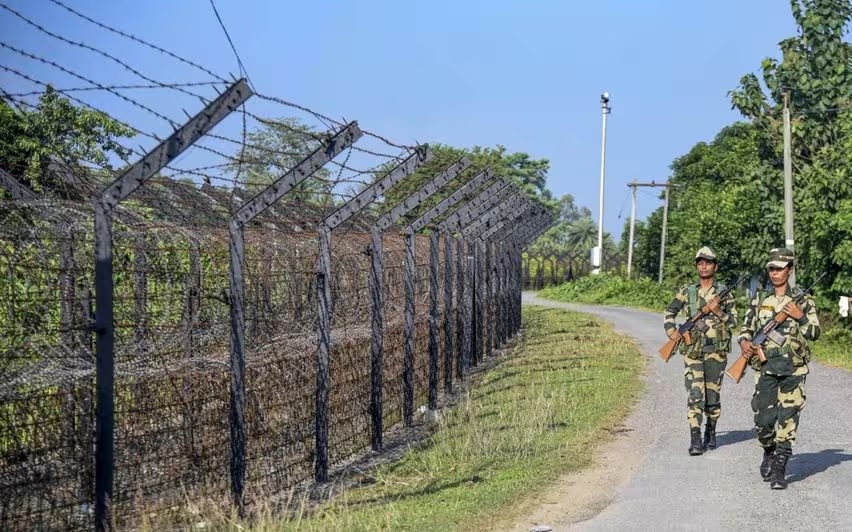Modi Govt to Construct 1643 km Long Fence on Indo-Myanmar Border: Amit Shah

Defense News ,India :- India is taking steps to secure its 1,643-kilometer border with Myanmar by building a fence similar to the one it has along its border with Bangladesh. Union Home Minister Amit Shah shared this decision during his visit to Assam, highlighting the government's commitment to national security. In addition to fortifying the border, Shah mentioned the end of the free movement agreement with Myanmar, signaling a significant change in the region.
Shah revealed the ambitious plan to fence the entire Indo-Myanmar border, adopting security measures already in place along the Bangladesh frontier. The goal is to improve surveillance and prevent unauthorized crossings. Initial efforts have started, with a 10-kilometer stretch in Moreh, Manipur, already fenced. Pilot projects using a Hybrid Surveillance System (HSS) are also underway in Arunachal Pradesh and Manipur, aiming to enhance border security.
Ending Free Movement Agreement
India plans to cancel the free movement agreement with Myanmar, which allowed residents along the border to travel up to 16 kilometers into each other's territory without visas. Shah emphasized the need for stricter border controls, though Mizoram Chief Minister Lalduhoma disagreed, citing historical and cultural ties between Mizos and Chins across the border.
Security Concerns and Regional Changes
The decision to fortify the Indo-Myanmar border comes as conflicts and ethnic tensions in the region escalate. Recent events, such as the military coup in Myanmar and ethnic violence in Manipur, highlight the importance of increased security measures. However, experts caution against potential destabilization and strained relations.
The proposed border fence faces challenges due to the rugged terrain, and concerns have been raised about its impact on local communities and cross-border ties. Critics question the security justifications, suggesting alternative motives behind the initiative.
India's decision reflects changing security priorities and regional dynamics. While the move aims to enhance national security, it brings complexities and controversies. Stakeholders must carefully consider the implications on bilateral relations and local populations as plans for border fortification progress.
The Modi government is committed to building impenetrable borders.
— Amit Shah (@AmitShah) February 6, 2024
It has decided to construct a fence along the entire 1643-kilometer-long Indo-Myanmar border. To facilitate better surveillance, a patrol track along the border will also be paved.
Out of the total border length,…


